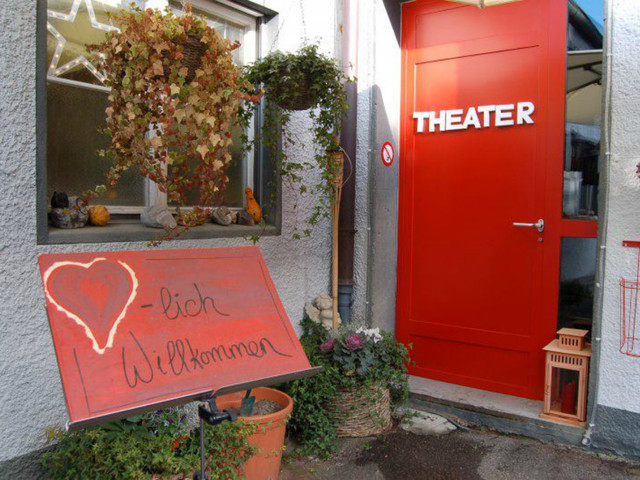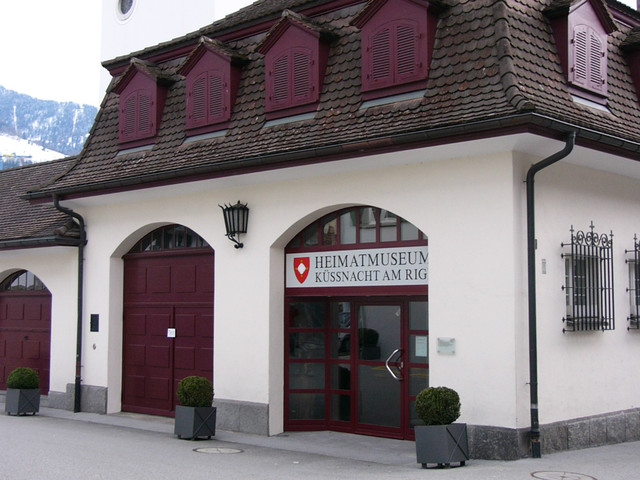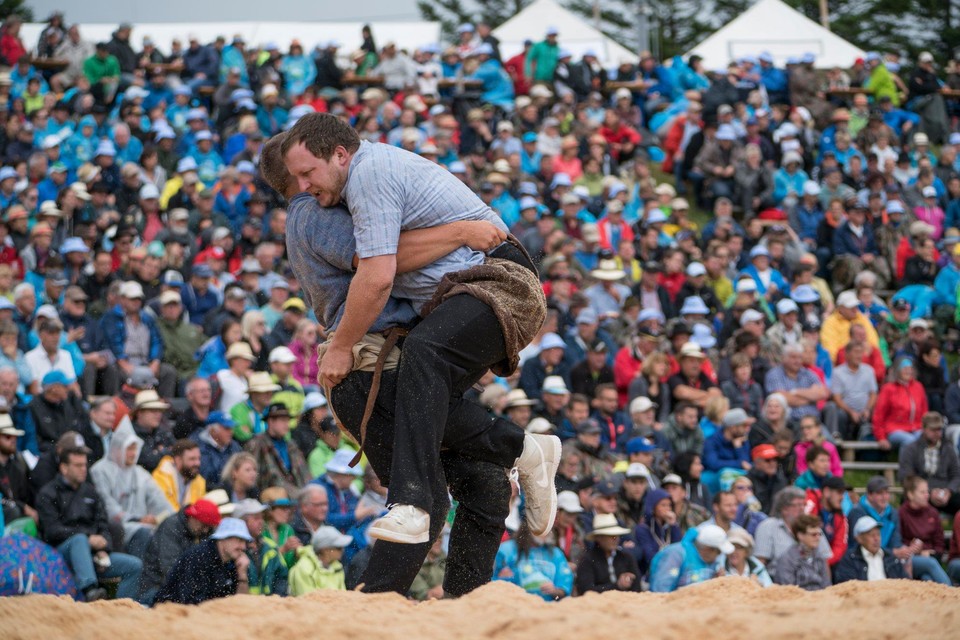cultural diversity
Culture and traditions
The area around Küssnacht has much to offer guests from a cultural point-of-view including an impressive array of sights. In addition, the region is alive with folkloric traditions passed down through the generations.
rediscover the old
Culture
Traditions and folklore in Schwyz are a spectacle! They are a feast for the eyes, ears, and of course, for the taste buds. The best folkloric events and experiences in Canton Schwyz can be found in the brochure below.
-
Klausjagen always takes place on December 5th. In the event that December 5th falls on a Saturday or Sunday, it is usually moved to the Friday before.
By this time, the young school boys will have already gotten the local population in the mood over the course of the previous two days. Especially due to the fact that the school boys will have already carried out their procession in the afternoon.
At nightfall, the first visitors will have made their way to the village center. Typically, the village is rammed with expat Küssnachters and other regulars who make the pilgrimage every year to behold the Klausjagen spectacle. At 20:00, the Klausjagen participants gather at the meeting point by Seebodenstrasse/Rigigasse. At 20:15, there is a big bang, the streetlights go out and the main procession begins through the darkness.
Directly proceeding the main procession, the «Geisselklepfter» entertain the crowd with their amazing whipping abilities. Afterwards, the impressive lanterns (Iffelen) start to pass silently by, hosited by the local Küssnacht men. Gradually, one starts to hear the horn tones and cow-bells in the distance as the musicians begin making their way down the main road. In between the musicians and Iffelen, St. Nikolaus arrives flanked by 3 «Schmutzlis» and 9 torch-bearers. After the last musicians pass, a legion of Klausjagen participants make their way through the streets with oversized-cowbells working their way up to an impessive crecendo. Approximately 150-200 horn players bring up the rear of the procession.
You can find more information about the Küssnachter Klausjagen and the St. Nikolaus Association of Küssnacht by clicking here. (only german)
-
This smaller, but impressive Klaus Procession starts at 20:00 at the Immensee train station. It then works its way down towards Echli – Bethlehem – Eichlistrasse- Village Center. Enjoy the mystic mood with the many lantern-bearers (Iffelen) and Klausjäger, as well as Santa Claus and Schmutzli.
The restaurants in Immensee will spoil you with their traditional specialties and renowned coffees / local schnaps.
The Klausjäger eat their dinner on a nearby passenger ship docked at the harbor.
-
The festivities kick-off with «Dirty Thursday» celebrations, which are well-enjoyed by the children. The Fasnacht Association is commited to organizing various events for the participants and spectators. There are Fasnacht parades, monster concerts organized on a regular basis. The «Guggenmusigen» or Fasnacht musicians from Immensee and nearby Küssnacht are guaranteed to entertain the guests with their hauntingly delightful music and their spooky masquerade balls.
Ultimately, the «old Fasnacht» (Sunday to Ash Wednesday) has established itself as the largest village-wide celebration when cabaratists and other comedians try to outdo each other in the 15 local restaurants and pubs.
-
An intriguing farmer's festival that takes place in the winter.
In autumn, when alpine farmer's made the descent down from the lonely pastures in the high-alpine back to the valley, they didnt only bring milk and cheese, but rather they also celebrated the freedom and joy of alpine life by dancing and singing. These are the humble origins of the modern-day farmer's market.
-
Autumn is time for the Chilbi or local fair. Stalls with vendors selling all sorts of delights, wild rides, nostalgic carousels and culinary treats await you there.
The Schwyzer are a festive lot. So much so that in 1779, the Cantonal Parliament deemed it neccessary that all church consecration festivals in Canton Schwyz be held on the same day. Officially, the second Sunday in October is the day when all of the Chilbi should take place. In the meantime, many villages have resorting to setting their own dates for their Chilbi. But the joie de vivre and celebratory nature of the Schwyzer has remained strong meaning that musical entertainment and a festival atmosphere have persevered as essential components of the modern-day Chilbi.
-
![Schwinger am Rigi Schwingfest]()
A Schwingfest, or Swiss Wrestling Tournament is more than just a ring sport. It's a combination of sport and folklore since folk musicians, yodlers, alphorn musicans, flag throwers and other customary figures also attend the event in large numbers.
«Kurz», «Übersprung», «Brienzer», «Hüfter», «Buur» or «Wyberhaagge», even the names of the different manouvers show that Swiss wrestling has remained a domain for strong men. When the opponents clad in farmer's attire face off in the ring, the only thing that matters is strength and technique. They are all fighting for the so-called «Siegesmuni», the wreath, and of course, honor. Schwingfeste are always large festivals. The most famous ones in Canton Schwyz are the tournaments at Mount Rigi and Mount Stoos.
-
Musicians from Canton Schwyz have influenced Swiss music from the beginning. Some of the early pioneers were Martin Inderbitzin, Albert Bachmann, Rees Gwerder and Hugo Bigi.
Special instruments play an essential role in the folk music from Canton Schwyz. For example, the concertina, which allows musicians to combine melody, rhythm, and complicated compositions in multiple keys. The Swiss zither and chlefeli - an instrument comprised of two wooden planks - are also prevalent in folkloric music.
Each region has their own particularities and the variety of musicians ranges from yodlers to alphorn trios to zither groups. Traditional intonations are as popular as newer iterations of folkloric music such as the Hujässeler style or the yodler Nadja Räss. We also highly recommend the Muotathaler Naturjuz, which is an archaic natural yodling technique.



